| 17_VOLUME_XVIIa_Page_4592 |
 |
| 17_VOLUME_XVIIa_Page_4593 |
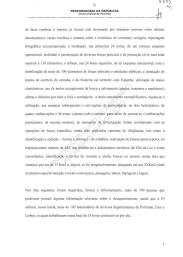 |
| 17_VOLUME_XVIIa_Page_4594 |
 |
| 17_VOLUME_XVIIa_Page_4595 |
 |
| 17_VOLUME_XVIIa_Page_4596 |
 |
| 17_VOLUME_XVIIa_Page_4597 |
 |
| 17_VOLUME_XVIIa_Page_4598 |
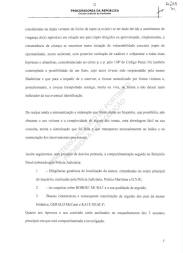 |
| 17_VOLUME_XVIIa_Page_4599 |
 |
| 17_VOLUME_XVIIa_Page_4600 |
 |
| 17_VOLUME_XVIIa_Page_4601 |
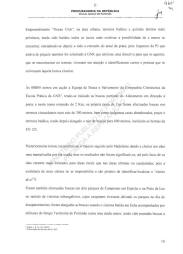 |
| 17_VOLUME_XVIIa_Page_4602 |
 |
| 17_VOLUME_XVIIa_Page_4603 |
 |
| 17_VOLUME_XVIIa_Page_4604 |
 |
| 17_VOLUME_XVIIa_Page_4605 |
 |
| 17_VOLUME_XVIIa_Page_4606 |
 |
| 17_VOLUME_XVIIa_Page_4607 |
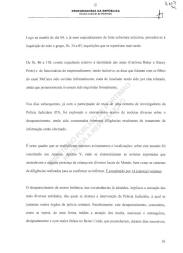 |
| 17_VOLUME_XVIIa_Page_4608 |
 |
| 17_VOLUME_XVIIa_Page_4609 |
 |
| 17_VOLUME_XVIIa_Page_4610 |
 |
| 17_VOLUME_XVIIa_Page_4611 |
 |
| 17_VOLUME_XVIIa_Page_4612 |
 |
| 17_VOLUME_XVIIa_Page_4613 |
 |
| 17_VOLUME_XVIIa_Page_4614 |
 |
| 17_VOLUME_XVIIa_Page_4615 |
 |
| 17_VOLUME_XVIIa_Page_4616 |
 |
| 17_VOLUME_XVIIa_Page_4617 |
 |
| 17_VOLUME_XVIIa_Page_4618 |
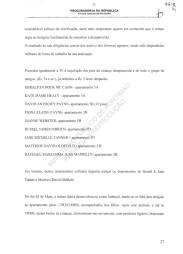 |
| 17_VOLUME_XVIIa_Page_4619 |
 |
| 17_VOLUME_XVIIa_Page_4620 |
 |
| 17_VOLUME_XVIIa_Page_4621 |
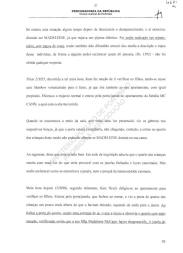 |
| 17_VOLUME_XVIIa_Page_4622 |
 |
| 17_VOLUME_XVIIa_Page_4623 |
 |
| 17_VOLUME_XVIIa_Page_4624 |
 |
| 17_VOLUME_XVIIa_Page_4625 |
 |
| 17_VOLUME_XVIIa_Page_4626 |
 |
| 17_VOLUME_XVIIa_Page_4627 |
 |
| 17_VOLUME_XVIIa_Page_4628 |
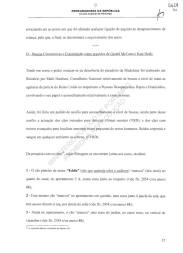 |
| 17_VOLUME_XVIIa_Page_4629 |
 |
| 17_VOLUME_XVIIa_Page_4630 |
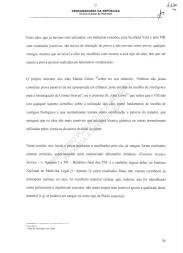 |
| 17_VOLUME_XVIIa_Page_4631 |
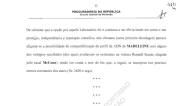 |
| 17_VOLUME_XVIIa_Page_4632 |
 |
| 17_VOLUME_XVIIa_Page_4633 |
 |
| 17_VOLUME_XVIIa_Page_4634 |
 |
| 17_VOLUME_XVIIa_Page_4635 |
 |
| 17_VOLUME_XVIIa_Page_4636 |
 |
| 17_VOLUME_XVIIa_Page_4637 |
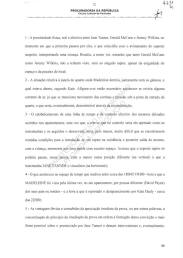 |
| 17_VOLUME_XVIIa_Page_4638 |
 |
| 17_VOLUME_XVIIa_Page_4639 |
 |
| 17_VOLUME_XVIIa_Page_4640 |
 |
| 17_VOLUME_XVIIa_Page_4641 |
 |
| 17_VOLUME_XVIIa_Page_4642 |
 |
| 17_VOLUME_XVIIa_Page_4643 |
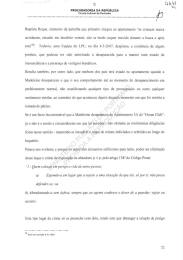 |
| 17_VOLUME_XVIIa_Page_4644 |
 |
| 17_VOLUME_XVIIa_Page_4645 |
 |
| 17_VOLUME_XVIIa_Page_4646 |
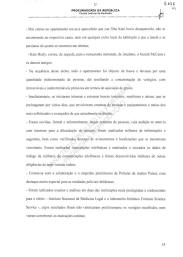 |
| 17_VOLUME_XVIIa_Page_4647 |
 |
| 17_VOLUME_XVIIa_Page_4648 |
 |
| 17_VOLUME_XVIIa_Page_4649 |
 |
|
Before actually entering the appreciation of the present inquiry it is useful to take a summarised look at the enormous dimension of the inquiry which is constituted of 17 Volumes, with a global processing of approximately 4500 pages, 9 appendixes that are integrated by 55 Volumes, in which 12000 pages and other relevant pieces were gathered, analysed and treated; further 22 dossiers were constituted, with more than 5000 pages, concerning fanciful or senseless news, yet organised out of mere caution.
Therefore, this inquiry which demonstrates the pertinent commitment of the Polícia Judiciária (PJ) in the resolution of the disappearance of minor Madeleine McCann, demanded from it the performance or coordination of several diligences as described in the various files, namely: the preservation of the location of the fact (although it had already been rummaged by numerous people as we will discuss ahead); several collections and examinations on the existence of eventual traces; a circumstantiated photographic report; the installation, in the first 24 hours of an extensive operational scheme, including the participation of several police and civil protection forces, in a total of over 130 elements; the reinforcement, in the next 24 hours of said operational scheme, with the mobilisation of over 300 members of police forces and public entities; the installation of control posts on roads and on the Southern terrestrial border with Spain; the use of sniffer dog teams; the use of exceptional search and rescue teams (aerial, terrestrial and maritime), alerts and diffusion all over the country and abroad. As a mere example, during the following weeks and on a permanent basis, two helicopters, four vessels and several all-road vehicles, apart from private airplanes and boats, were employed; in the same manner, the investigation operations were coordinated with the specific search operations, with hundreds of diligences performed, like the identification and the formal and informal hearing of citizens, door-to-door searches, in the impressive number of 443, at the residences and tourist resorts of Vila da Luz and its surroundings, the identification and search of vehicles, and searches on the terrain, in an area that started out covering 15 Km2, and progressively grew to 30Km2 (where special attention was paid to locations like wells, passages, tunnels, reservoirs and lakes).
During the following days, more than 700 persons who might possess some relevant information about the disappearance were formally and informally questioned, with the PJ using more than 100 officers from several departments of Portimao, Faro and Lisbon, who worked on a consecutive base of 24 hours per day to accomplish the task.
All the locations where there could be images that might be related to the case (like, for example, restaurants and petrol stations) were equally consulted, and the telephone lines of the permanent services of the Portimao and Faro departments were made available. A mobile police post was installed in Vila da Luz to collect information.
Apart from the already mentioned identifications and door-to-door house searches, the listing, contact and interview with known local suspects with previous connections to sexual criminality against minors, was performed.
The PJ was especially careful to promote regular meetings with the missing child's parents and also designated a Liaison Officer for the family, for permanent support and relationship, with the active following and cooperation of the Royal British Consulate in Portimao.
Shortly after the beginning of the investigation continuous relationships with the Leicestershire Constabulary, which, for the effect, sent several of its officers to Portugal, with the PJ equally sending officers to the United Kingdom, were established, and intense cooperation and understanding was registered between these entities, which were united in the common purpose of searching for the missing child, and for the truth.
In the inquiry it is clear that the PJ never dismissed any information or credible elements that might lead to the revelation of facts, with over 2000 formal and informal diligences carried out over the months, and the PJ having explored, nationally and internationally, all of the information with a higher or lower degree of credibility, with special relevance for tens of supposed sightings or trackings of the child, most of which were widely reported by the press.
As an example, cases of international cooperation can be mentioned, namely with Spain, the Netherlands and the United Kingdom, which led to the detention or identification of persons that tried to introduce misleading information about the hypothetical destiny or tracking of the child.
In summary, it is notorious that the PJ spared no efforts in the sense of making exceptional technical, human and financial means available to find the child and to discover the truth of facts, having been completely accompanied in this effort by the Leicestershire Constabulary, the police force that is located in the city of Leicester, where most of the people in the holiday group come from.
II - About the Inquiry
A - General Analysis
In the present process, the disappearance of the child of British nationality, Madeleine Beth McCann, daughter of Gerald Patrick McCann and Kate Marie Healy, aged three on the date (about to become four, as she was born on the 12th of May 2003), was investigated.
Concerning the time and the place, the facts have taken place on the 3rd of May of 2007, within the time span, according to testimonies, between 9.05 p.m. and 10 p.m., at the resort called "Ocean Club", located in Vila da Luz - Lagos, where the child's family, together with a group of seven persons, - with whom they kept a friendship that had started before this trip and which was based on professional relations and on other leisure trips -, were enjoying a holiday period, with the duration of one week, having arrived in Portugal on the 28th of April 2007, more precisely at the Airport of Faro, coming from the United Kingdom.
At check-in, they were placed in several apartments, all of them in block G5, next to each other, which was a demand, or, at least, a suggestion of the entire group, which was composed of the couple Gerald McCann, Kate Marie Healy and their children Sean, Amelie and Madeleine, (apartment 5A), David Anthony Payne, Fiona Elaine Payne, their children Lilly Payne and Scarlett Payne and mother-in-law Dianne Webster (apartment 5H - first floor), Russell James O'Brien, Jane Michelle Tanner and their children Ella O'Brien and Evie O'Brien (apartment 5D) and Matthew Oldfield, Rachael Mariamma Jean Mampilly and their daughter Grace Oldfield (apartment 5B), with the apartment that was occupied by the McCann family being the one that was most accessible and had the easiest visibility from the outside.
The behaviour of the group's members until the day of the event was shaped by the normality of a daily routine, which, as far as the McCann couple is concerned, consisted of getting up at around 7.30 a.m. and having breakfast in the apartment; at around 9/9.30 a.m. they left the apartment and left their children at the crêche where they remained until around 12.30 a.m. After lunch, at around 1.30 p.m., the children went to play by the pool and around 2.30 p.m. they left them at the crêche again, where they stayed until around 5 p.m., the time at which the children went for high tea at the bar, which was done in a group, independently of age, in a recreational area next to the "Tapas" restaurant; between 5 and 5.30 p.m., they returned to the apartment, where around 5.30 p.m. they bathed the children that went to bed at 7.30 p.m.
From the 2nd day of their stay onwards, the couple had dinner at the "Tapas" Restaurant, with the rest of the group, while all of the children stayed asleep alone in their apartments, with the surveillance initially being made by each couple, whose members took turns in checking the children, and as the days went by, each member who went to check his children would take the chance and check on the rest of the children, with the exception of the Payne couple, that possessed their own technological control system, through baby listening monitors, an issue that we will discuss in more detail further ahead.
All of the group's members including the McCann couple were questioned several times, at length and in detail, in order to collect the greatest possible number of relevant details that could assist the investigation in discovering the truth of the facts.
From the analysis of the total of depositions that were made, the existence of important details that were not fully understood and integrated became evident; details that would need to be tested and tried on location, in order to establish the apparent failures to meet and lacks of synchrony, even divergences, in a suitable diligence, which was not possible to perform despite the commitment that was displayed by the Public Ministry and by the PJ to fulfil that purpose, as we will see in closer detail, further ahead.
Considering the participated facts, conjugated with the information that was offered. namely by the witnesses, and with the information that was made available through the development of the inquiry, the investigation equated the verification of several hypotheses: abduction, for the purpose of sexual exploration or others (i.e. posterior adoption, child traffic, organ traffic), without homicide; abduction, followed by homicide with (or without) concealment of a cadaver, hypotheses that were considered under the double sides of the abduction (if it existed) having occurred due to feelings of vengeance of the abductor(s) towards the parents (directed abduction) or simply taking advantage of the circumstance that the child was in a situation of actual vulnerability (opportunity abduction), accidental death, with posterior concealment of the cadaver and, underlying all of these possibilities, abandonment, substantiated as a crime under article 138 of the Penal Code. The possibility of theft, whose author would have been disturbed by the child Madeleine and who, in order to prevent her from disturbing him, neutralised her in a violent manner, and, afterwards, took her with him, dead or alive, in order to leave no trace that could eventually lead to his identification.
The systematisation and order that were given to the Inquiry should further be stressed, as it facilitates an easy approach in its consultation, despite its volume and the complexity of some of the issues; with attention to the synthesis that was made and that is visible namely in the index and in the listing of the persons that intervened in the process.
Therefore, we will follow, despite some isolated diversions, the division that was observed in the Final Report that was made by the Polícia Judiciária:
1 - General diligences to locate the child, performed by the Polícia Judiciária, the Polícia Marítima [Maritime Police] and the G. N. R., and added to the inquiry's main body;
2 - The suspicions about Robert Murat and his arguido status;
3 - Sniffer dog searches and the consequent constitution as arguidos of the British child's parents, Gerald McCann and Kate Healy.
Concerning the appendixes and their contents, they will be analysed within the 3 main issues into which the investigation has been divided.
B - Detailed Analysis
[this section to be completed soon]
C - The suspicions about Robert Murat and his constitution as an arguido
Apart from the suspect being seen on the location of the occurrence and speaking about the event with the persons that were around there, namely journalists, his name was on the list of interpreters, and he made a commitment as such (Commitment Act on page 1577).
On the 6th of May 2007 the PJ received a fax from the Leicestershire Constabulary (page 307) in which this police transmits that a reporter from the Sunday Mirror, Lori Campbell, had communicated that certain behaviours of the suspect compromised him, namely by giving his name without any information about himself, by having conflicting relationships with several people and being worried when a photograph of him was taken for that newspaper, which led the English Police to request that he was relieved of interpreter duties.
The files further contain:
- On page 328 a report of an external diligence tells that, on the 4th of May 2007, the suspect offered his assistance to the GNR to help with anything that was needed, namely as an interpreter;
- That on the 6th of May 2007 the signatory of said report was approached by several journalists indicating the arguido with suspicious behaviours, in the sense of what was already explained concerning the fax;
- On page 461 an anonymous information, where a telephone call from a woman who tries to incriminate the suspect is reported, although no facts were presented;
- On page 957 there is a report about an external diligence that resulted from a trip to the location where, according to witness Jane Tanner, she saw, a short time before she knew that Madeleine had disappeared, a man carrying a child walking into the direction of the suspect's house, Casa Liliana;
- On page 960 the service information according to which the curiosity that the arguido showed in the investigation was found strange.
In order to be able to be heard about the suspicions that befell him, Robert Murat was made an arguido on the 14th of May 2007 [9], having declared that he has already served as an interpreter during process actions, that he has a daughter that was born in 2002 and lives in England where he visits her several times, having returned to Portugal on the 1st of May 2007 and that he rented a vehicle because his mother uses the VW at the stand that was put up in Luz to support Madeleine's family.
That on the 3rd of May 2007 he didn't leave home in the evening, having heard a siren at around 10.30 p.m. or shortly afterwards, a fact that he commented with his Mother, but didn't come outside to investigate.
On Friday the 4th of May 2007 he was alerted by his Mother to the disappearance of a child in Praia da Luz, according to news on "Sky News", having then walked to the location of the disappearance, where he was introduced to the child's parents, offering his assistance.
That afterwards, with a GNR officer and a member of the resort staff, they entered several apartments, with the purpose of locating the child. That before this occasion, he didn't know the inside of the "Ocean Club".
He further clarified, because he was asked, that he was the main suspect among the journalists, therefore from that moment onwards he refused speaking to them, including in that refusal the mention of his full name, or allowing to be photographed.
He further clarified that he has nothing to do with the child's disappearance, and knows nothing about this case, explaining that he asked an English policeman about the manner in which the British police was able to trace a person in a given location and at a given time and if the police could trace him at home through his mobile phone, but he did this to prove his innocence.
On the other hand, rather unpleasant references were made to his personality, as was the case of a witness that has known him for many years [10].
It should be further referred that witnesses Rachel Mampilly, Russell James O'Brien and Fiona Elaine Payne mentioned that they saw arguido Robert Murat at the "Ocean Club" resort on the night that Madeleine disappeared.
During the confrontation that took place on the 11th of July 2007 [11], these witnesses, just like the arguido, maintained their previous positions.
Nevertheless, the positions are different regarding the witnesses that were heard, because while Sílvia Baptista [12] admits it is very possible that a person with the arguido's characteristics was helping to search for Madeleine on the night of the disappearance, other witnesses, Paul Wright, June Wright, Barend Weijdon and GNR officer José Baptista Roque [13], among other officers, mentioned that they didn't see the arguido on location that night.
Facing the suspicions that befell the arguido, considering what he seemed to transmit and the type of occurrence that was under investigation, whose real scope was not, like now, delimitated, and in order to confirm them or to set them aside, taking into account that they were indispensable for the continuation of the investigation, searches were made at the arguido's house as well as at his mother's and telephone interceptions were carried out, both on the arguido and on those with whom he directly or indirectly interacted, namely with whom he met on an almost daily basis and with whom he kept telephone contact.
Searches were also performed at the location where he started to spend the night at, the Quinta Salsalito, which is a vast place of difficult control, therefore the search on this location might permit the collection of elements that are reputed to be of high interest for the investigation, but those searches had no effect whatsoever.
During the searches at Casa Liliana, two rain water cisterns near the pool were checked, the missing minor's trail was searched by the GNR's sniffer dog team, both inside and outside the residence, searches were equally performed inside three vehicles that were parked there, and the matching photographic report was carried out by members of the CSS (Crime Scene Sector), experts from the Criminal Police Lab, but nothing positive was attained.
From the forensics exams to Serghei Malinka's, Robert Murat's and Jenny Murat's computers [14], it could be concluded that the contents of the examined drives produced nothing that could compromise them as participants in any illicit activity, namely the one that was being investigated in the process.
From the interception of communications, the telephone contact record of arguido Robert Murat, his mother Jennifer Murat, witnesses Michaela Walazuch, Luís António and Sergey Malinka; records and maps of the telephone calls that were made from public telephone booths in Praia da Luz nothing flows that could have any indicative use.
From the analysis that was performed on every contact, from the 1st of November 2006 until the 19th of July 2007, by Robert, Michaela, Sergey, Jennifer and Luís António, results that Robert and Malinka, only contacted each other eight times [15], that there were no relations between Sergey and Luís António, nor between him and Robert, nor between either of them and the Murat residence, between the 30th of April and the 4th of May 2007 [16].
Searches were performed at the residence, and the subsoil was explored with a Geo-radar (GPR), - which consists of a radar antenna that transmits electromagnetic energy in the shape of an impulse within frequencies between 25 MHz and 1 GHz. Those impulses are partially reflected through sub-superficial geological structures, captured with a receiving antenna and marked as a time record of continuous bi-directional path which is presented as a pseudo-geological record section - e these technical searches neither found nor marked anything of interest to the files [17].
Searches were equally performed with the use of sniffer dog support, with the dog Eddie that detects cadaver odour, and it was verified that the dog signalled nothing [18]. The examination of the targets' vehicles (arguido and people who interacted with him), nothing was found.
Therefore, despite the suspicions that befell the arguido, - partly because they were induced, albeit involuntarily, by himself, namely the protagonism that he assumed both with the group of friends, which the McCann couple was part of, and with the journalists, showing his great curiosity in finding out what diligences had been performed and which were to be performed, and by objective elements and the fact that his residence is located in the direction which, according to Jane, was taken by the stranger who carried the child in his arms - and which therefore demanded his constitution as an arguido. It is nevertheless certain that through the collected evidence, said suspicions gradually emptied themselves, until the point where any connection of the arguido to the child's disappearance was set aside, which is why, at the end, the archiving of the process will be determined.
[9] Notice on page 1169
[10] Questioning report on page 1288
[11] Confrontation report on pages 1957/1958
[12] Questioning report on page 1290
[13] Questioning report on pages 1338, 1328, 1330 and 1349
[14] Forensics - Appendix-1, Vol. IV, V and VI
[15] Analyses report, annex 87
[16] Analyses report, annexes 82 to 86
[17] Search and Apprehension report on page 2130-v
[18] Dog Inspection report, page 2131
D - Dog searches and Constitution of Gerald McCann and Kate Healy as arguidos
In an attempt to advance towards the discovery of Madeleine's whereabouts, a Report was written by Mark Harrison, National Counsellor for searches at the level of all police agencies in the United Kingdom, concerning Missing Persons, Abduction and Homicides, with his role comprising the counselling in relation to those people.
Thus a request for help in counselling at the level of searches was made, with part of that help being made through the action of dogs that are trained to detect mortal victims (VRD), and dogs with advanced training in tracing very small samples of human remains, bodily fluids and blood, in any environment or terrain (EVRD).
From the searches with the dogs [19], whose video recordings are appended to the files, the following resulted:
1 - The tracking dog named "Eddie" (dog that signals cadaver odour) "marked" (signalled) inside the couple's bedroom, in apartment 5A, in an area next to the wardrobe (cf. page 2054 and/or annex 88);
2 - That same dog "marked", in the same apartment, an area near the living room window, which has direct access to the street, behind the sofa (cf. page 2054 and/or annex 88);
3 - Still inside the apartment, the dog "marked" a garden area, in a square corner, vertically to the balcony (cf. page 2054 and/or annex 88);
4 - In the "Vista do Mar" villa, the house that was rented by the McCanns after leaving the Ocean's Club, the dog "marked" the area of a wardrobe that contained inside the soft toy that belonged to Madeleine McCann (cf. page 2099 and/or annex 88);
5 - In the examination of the clothes, which was carried out in a pavilion in Lagos, this dog signalled/"marked" pieces of clothing that belong to Kate Healy (cf. page 2101 and/or annex 88);
6 - This dog signalled the lower outside area next to the driver's door of the Renault - 59-DA-27 - that was rented by the McCanns (cf. page 2187 and/or annex 88);
7 - Finally it "marked" the key/card of that vehicle when it was hidden under a fire prevention sand box (cf. page 2187 and/or annex 88);
8 - The tracking dog named "Keela" (dog that detects the presence of human blood), "marked" an area in the living room, in apartment 5A, which had already been "marked" by "Eddie" (cf. page 2054 and/or annex 88);
9 - After the tiles which this dog had signalled during a first inspection, and which are mentioned under the previous item, were removed, the dog signalled the same area again (cf. page 2190 and/or annex 88);
10 - It made another "marking" on the lower part of the left hand side curtain of the window that we have been referring to (cf. page 2190 and/or annex 88);
11 - It "marked" the right lower lateral part of the inside of the boot of vehicle 59-DA-27 (cf. page 2187 and/or annex 88);
12 - Further concerning the vehicle, "Keela" "marked" the storage compartment, on the driver's door, which held the vehicle's key/card (cf. page 2187 and/or annex 88);
13 - This dog also marked the key/card when the same was hidden under the fire service sand box, inside the parking lot.
The viewing of these videos, whose contents is very impressive, becomes essential to understand the dogs' action and signalling, more than by any words.
These dogs, which had already been used on multiple occasions by the Scotland Yard and by the FBI with positive results, are evidence collection means and do not serve as evidence; any residue, even if invisible to the naked eye, which is collected using this type of dogs, has to be subject to forensics testing in a credentialed laboratory.
Martin Grime, the dogs' instructor himself [20], mentions in his report: "Whereas there may be no retrievable evidence for court purposes this may well assist intelligence gathering in Major Crime investigations"; or scientist Dr John Lowe [21] who refers that the FSS has no scientific support about the use of the dogs as a fundament for the collection of biological residues and that normally take the handler's word for certification, that asserts that the dogs are more sensitive than any chemical technique or other techniques that are normally used by crime scene sector experts.
In that sense, forensic examinations were performed in the areas and on the objects that were marked and signalled by the blood dog, especially in a credentialed British lab (Forensic Science Service - cf. Appendixes I and VII - FSS Final Report), and also, some of them, at the National Institute for Legal Medicine (cf. Appendix I), whose final results failed to corroborate the canine markings, that is to say that cellular material was collected, which was nevertheless not identified as belonging to a specific person, and it was not even possible to establish said material's quality (namely if it could be blood or another type of bodily fluid).
It should be stressed that the option towards that Laboratory was and remains obvious taking its prestige, its independence and its scientific reputation into account, although on an initial approach there seemed to be the possibility of compatibility between MADELEINE'S DNA profile and some of the collected residues (of which those that existed in the Renault Scenic vehicle that was rented by the McCann couple were in great quantity), taking the contents of the fax that is reproduced below exactly as it appears in the files, into account (pages 2620 and following)
* * *
From: "Prior Stuart"
To: "Task Portugal"
Sent: 04 September 2007 10:14
Subject: FW: Op Task - in Confidence
_________
From: Lowe, Mr J R
Sent: 03 September 2007 15:01
To: stuart prior
Subject: Op Task - in Confidence
Stuart,
Firstly, here are the last three results you are expecting
An incomplete DNA result was obtained from cellular material on the swab 3a. The swab contained very little information and showed low level indications of DNA from more than one person. However, all of the confirmed DNA components within this result match the corresponding components in the DNA profile of Madeline McCann. LCN DNA profiling is highly sensitive, it is not possible to attribute this DNA profile to a particular body fluid.
There is no evidence to support the view that Madeline McCann contributed DNA to the swab 3B
A complex LCN DNA result which appeared to have originated from at least three people was obtained from cellular material recovered from the luggage compartment section 286C 2007 CRL10 (2) area 2. Within the DNA profile of Madeline McCann there are 20 DNA components represented by 19 peaks on a chart. At one of the areas of DNA we routinely examine Madeline has inherited the same DNA component from both parents; this appears therefore as 1 peak rather than 2, hence 19 rather than 20. Of these 19 components 15 are present within the result from this item; there are 37 components in total. There are 37 components because there are at least 3 contributors; but there could be up to five contnbutors. In my opinion therefore this result is too complex for meaningful interpretation/conclusion.
Why?...
Well, lets look at the question that is being asked
"Is there DNA from Madeline on the swab?"
It would be very simple to say "yes" simply because of the number of components within the result that are also in her reference sample.
What we need to consider, as scientists, is whether the match is genuine and legitimate; because Madeline has deposited DNA as a result of being in the car or whether Madeline merely appears to match the result by chance. The individual components in Madeline's profile are not unique to her, it is the specific combination of 19 components that makes her profile unique above all others. Elements of Madeline's profile are also present within the the profiles of many of the scientists here in Birmingham, myself included. It's important to stress that 50% of Madeline's profile will be shared with each parent. It is not possible, in a mixture of more than two people, to determine or evaluate which specific DNA components pair with each other. Namely, we cannot separate the components out into 3 individual DNA profiles.
Therefore, we cannot answer the question: is the match genuine or is a chance match.
The same applies to any result that is quoted as being too complex for meaningful inclusion/interpretation
What questions will we never be able to answer with LCN DNA profiling?
When was the DNA deposited?
How was the DNA deposited?
What body fluid(s) does the DNA originate from?
Was a crime committed?
These, along with all other results, will be formalised in a final report
Please don't hesitate to contact me if you require any further assistance
kind regards
John
but whose compatibility, as can be concluded from the above mentioned final FSS report, was not confirmed after the performance of lengthy and complex tests.
Previously to these indications, is the circumstance that the Parents were the last known persons who had been with Madeleine, alive and traced, a circumstance that in itself made them subject to investigation.
On the other hand, there was information, which was not confirmed afterwards, that the McCanns, while focused on stating an abduction theory, had contacted the British media (Sky News), before calling the police authorities.
Confronted with these elements, namely the possibility of the existence of a cadaver in the apartment and in the vehicle that was used by the parents, founded suspicions of their involvement were raised.
As they were summoned to depose again, while there was no plausible explanation for those situations and as they were to be confronted with the dogs' findings and with the lab information, which were susceptible of rendering them responsible as authors of crimes (at least, of neglectful homicide and of concealment of a cadaver), they were, obligatorily and inexorably, made arguidos, in strict obedience to article 59 nr. 1 of the Penal Process Code; thus the disposition from nr. 4 of article 58 (presently 5) - its new redaction was not in force yet, taking into account that they were made arguidos on the 6th of September 2009 - and on the other hand they could benefit from arguido status, with all the rights and guarantees of defence that are inherent to it, despite the stigma that is associated with it, which is techno-juridically misadjusted. In effect, the constitution and questioning as arguidos, while used to confirm indications towards the committing of crimes, are also used, with equal strength and reason, to infirm indications and to eliminate suspects.
As judicially stressed in the sentence dated 06.10.1990 by the then Judge of the Police Court of Lisbon. "The authority that directs the inquiry is not free to postpone the moment when a witness passes into arguido status (. . .) if diligences are being performed, which are destined to prove her imputation, that affect her personally (. . .)"
Colectânea de Jurisprudência, 1990, vol. IV. p.323 and following.
The constitution of Gerald and Kate McCann as arguidos at that moment is nothing more that the practical fulfilment of the right to defence of those arguidos, which is to say, to ensure their concrete rights to "co-determine or conform the process' final decision. Said rights assume consistency and effectiveness, according to the new Code, right after the moment of constitution as an arguido, and therefore, still during the inquiry and the instruction." - Professor Jorge de Figueiredo Dias, "Sobre os sujeitos processuais no novo Código de Processo Penal" Jornadas de Processo Penal, CEJ, Livraria Almedina, 1988, p 28.
Therefore, under the light of interpretation of the elements that constituted the process at that date, there is no doubt whatsoever concerning the legitimacy and legality of their constitution as arguidos, as it is also certain that any investigation has its own dynamics and the continuous flow of elements into the files may alter the situation, as it has, and no judgment or presumption of guilt can be extracted from such a process act.
[19] Cf. digital drives contained in Appendix III
[20] Page 2271
[21] Questioning file on page 3899
E - About the Interest of the Reconstitution
Taking into account that there were certain points in the arguidos' and witnesses' statements that revealed, apparently at least, contradiction or that lacked physical confirmation, it was decided to carry out the "reconstitution of the fact", a diligence that is consecrated in article 150 of the Penal Process Code in the sense of duly clarifying, on the very location of the facts , the following very important details, among others:
1 - The physical, real and effective proximity between Jane Tanner, Gerald McCann and Jeremy Wilkins, at the moment when the first person walked by them, and which coincided with the sighting of the supposed suspect, carrying a child. It results, in our perspective, strange that neither Gerald McCann nor Jeremy Wilkins saw her, or the alleged abductor, despite the exiguity of the space and the peacefulness of the area;
2 - The situation concerning the window to the bedroom where Madeleine slept, together with the twins, which was open, according to Kate. It seemed then necessary to clarify if there was a draught, since movement of the curtains and pressure under the bedroom door are mentioned, which, eventually, could be verified through the reconstitution;
3 - The establishment of a timeline and of a line of effective checking on the minors that were left alone in the apartments, given that, if it is believed that such checking was as tight as the witnesses and the arguidos describe it, it would be, at least, very difficult to reunite conditions for the introduction of an abductor in the residence and the posterior exit of said abductor, with the child, namely through a window with scarce space. It is added that the supposed abductor could only pass, through that window, holding the minor in a different position (vertical) from the one that witness JANE TANNER saw (horizontal);4 - What happened during the time lapse between approximately 6.45/7 p.m. - the time at which MADELEINE was seen for the last time, in her apartment, by a different person (David Payne) from her parents or siblings - and the time at which the disappearance is reported by Kate Healy - at around 10 p.m.;
5 - The obvious and well-known advantages of immediate appreciation of evidence, or in other words, the fulfilment of the principle of contiguity of evidence in order to form a conviction, as firm as possible, about what was seen by Jane Tanner and the other interposers, and, eventually, to dismiss once and for all any doubts that may subsist concerning the innocence of the missing [child's] parents.
In this sense, the legal procedures were followed, according to the norms and conventions that are in force, and the appearance of the witnesses was requested, inviting them to be present inclusively appealing to solidarity with the McCann couple, as it is certain that since the beginning they adhered to that process diligence.
Nevertheless, despite national authorities assuming all measures to render their trip to Portugal viable, for unknown motives, after the many doubts that they raised about the necessity and opportunity of their trip were clarified several times, they chose not to attend, which rendered the diligence inviable.
We believe that the main damage was caused to the McCann arguidos, who lost the possibility to prove what they have protested since they were constituted arguidos: their innocence towards the fateful event; the investigation was also disturbed, because said facts remain unclarified.F - Communications analysis
The process has been appended with the daily maps of the mobile phones' registry by registrar/owner, a map of the intervals without communications of the couple's equipment between the 4th and the 13th of May, and maps of the localities where the antennas were activated, as well as the report of the analysis of the communications that were registered by the antennas that serve Praia da Luz, of the 3 service providers, made by the 9 members if the McCann family's group, concerning the days between the 2nd and the 4th of May (calls that were operated exclusively by the fixed network are not contemplated, because as they do not use the GSM system of mobile communications, those do not activate the antennas ("B.T.S.").
During that period they maintained a communication traffic that can be accepted as normal for someone who is on holidays. Between the 4th and the 17th of May, the antennas with most traffic registered are the ones that serve the localities of Luz, Lagos, Portimao and others that are situated between Praia da Luz and Portimao; the daily activity of the mobile phones of each one of the 9 persons in the group was analysed, with every register since their arrival until their departure being treated, as well as about the time intervals when Madeleine's parents' mobile phones were without any contact between 00 hours of the 4th and 00 hours of the 14th of May.
It was important to determine if through the analysis of that data other investigation hypotheses appeared, leading to the discovery of what happened on the night of the 3rd of May, at apartment 5A, of the "Ocean's Club of Praia da Luz", but this also remained unsuccessful.
The fulfilling of the Rogatory Letters to the Justices of the United Kingdom failed to add anything relevant to what was already in the Process.
G - Appreciation and Juridical Frame
From the analysis of the elements that are part of the files, this first conclusion emerges immediately:
When the GNR officers arrived on location, several people had already touched the window and entered Madeleine's and her siblings' bedroom, and later on, when the PJ arrived at the apartment to collect traces, the space had already been rummaged through and contaminated due to the entrance of all of those people and to the fact that everything had been touched, thus rendering inviable, right away, the collection of important elements for the investigation.
In the drama of the moment, nobody - parents, friends of the parents, resort management and personnel - was cold and lucid enough to preserve the crime scene, preventing that rummaging and the consequent contamination of traces from happening, while it is common knowledge that it is any person's responsibility to preserve crime scenes - apart from a legal demand: article 171 number 2 of the Penal Process Code - thus avoiding that traces can be erased or altered, therefore the collectable evidence had already lost much of its indicative value. Hence the lack of evidential elements that were collected during that initial phase, so much so that the only latent fingerprints that were collected, with the number of elements that are necessary to perform a positive identification, were individualised as belonging to the missing child's mother and to a GNR officer (pages 885 and 1520), thus immediately rendering the collection of important data for the investigation inviable.It was only when members of the Polícia Judiciária arrived, at around 0.10 a.m., following a request for their presence, that measures were taken to make the collection of residues and the preservation of the event's location possible.
It further results from the files that, despite the fact that the 'Ocean Club' resort's crêche offers a complimentary dining out service from 7.30 until 11.30 p.m., at an additional cost, apart from another babysitting service with no defined schedule [22], the members of this group of friends with children chose to do their own checking on the children during dinner. During a first phase, each couple took turns among them to check on their own children, and as the days went by, they started to ask one of the members that got up, to listen whether there was any noise in their apartment, as Jane Tanner mentioned during questioning on the 10th of May 2007 [23], with the exception of the David and Fiona Payne couple, who possessed an intercom system to watch over their children Lilly Payne and Scarlett Payne.
It is extracted from the files that the McCanns and their friends checked to verify if all was well with their children, as can be concluded from what the members of this group declared, and also derives from the testimony of Jerónimo Tomás Rodrigues Salceda, a waiter at the Tapas [24], who stated that he "noticed, because it was evident, that some of the group's members sometimes went outside of the restaurant to do something, which by and by he realised was to "check" on the children. Nevertheless, he was always convinced that those children were in a space that belonged to the Luz Ocean Club. . ."
Nevertheless, it can also be concluded from the files that this surveillance with the periodicity that was mentioned above was not the one that is alleged in the files, which leaves unexplained why, on that night, the procedures were altered in the sense of reducing the checking intervals.In effect, this group of friends was enjoying a short holiday period, therefore perfectly relaxed and it would be normal that, having dinner, inclusively with an entertainment service available [25], they were not very concerned with anything that might happen to their children during that dinner period.It is so much so that Kate herself mentions that on Thursday morning, the 3rd, Madeleine questioned her about the reason why they didn't come to her room, given the fact that the twins had cried [26], as was also mentioned by Gerald.
Pamela Fenn, who resides on the residential block's first floor, above the apartment that was occupied by the McCann family, clarified that on the 1st of May 2007, two days before her disappearance, at around 10.30 p.m., she heard a child crying, which from the sound would be MADELEINE and that she cried for an hour and fifteen minutes, until her parents arrived, at around 11.57 p.m.
This shows that the parents were not persistently worried about their children [and] that they didn't check on them like they afterwards declared they did, rather neglecting their duty to guard those same children, although not in a temerarious, or gross, manner.
If said guard duty had been observed, in the possibility of this being an abduction, as was insistently mentioned and continues to be mentioned and is admissible to have happened, its occurrence might eventually have been rendered inviable.
It is further added that Kate, after noticing that the bedroom's window and shutters were open and Madeleine was missing, headed for the Tapas Restaurant asking for help, suggesting that an abduction had taken place, it is incomprehensible, or only comprehensible in a state of panic, that she once again abandoned, this time only the twins, while the Tapas was close enough to shout for help, - although Matthew Oldfield refers [27] that from the restaurant table there was very tenuous visibility, taking into account the distance at which they were from the apartments, and vision being hampered by a transparent linoleum that covered the area where the tables were located.
Finally, the fact that, despite all that confusion and all that noise, the twins continued to sleep, as mentioned by GNR Officer José Maria Baptista Roque, a member of the patrol that was first to arrive at the apartment "the children never woke up, remaining in a ventral decubitus position, not moving during the search and afterwards" [28], remains unexplained. Nevertheless, a Team from the Criminal Police Lab, on the 4th of May 2007, eliminated the existence of any product that could have been ministered to the missing child, in order to maintain her in a state of unconsciousness, as well as the presence of blood traces.
On the other hand, it also results that none of the parents was inside the apartment when Madeleine disappeared and that their behaviour until the moment of the disappearance was perfectly normal, not manifesting any kind of preoccupation or any other similar feeling, contrary to what happened after that moment when the state of panic was notorious.
While it is an unavoidable fact that Madeleine disappeared from Apartment 5A of the 'Ocean Club', the manner and circumstances under which this happened are not - despite the numerous diligences made in that sense -, therefore the range of crimes that were indicated and referred to during the inquiry remains untouched.
It seems evident to us and because the files contain enough elements for such, that the crime of exposure or abandonment according to article 138 of the Penal Code can be eliminated from that range:
"1 - Whoever places another person's life in danger,
a) By exposing her in a location where she is subject to a situation from which she, on her own, cannot defend herself against; or
b) Abandoning her without defence, whenever the agent had the duty to guard her, to watch over her or to assist her;"
This legal type of crime is only fulfilled with intent, and this intent has to cover the creation of danger to the victim's life, as well as the absence of a capacity to defend herself, on the victim's behalf. In the case of the files and facing the elements that were collected it is evident that none of the arguidos Gerald or Kate acted with intent. The parents could not foresee that in the resort that they chose to spend a brief holiday, they could place the life of any of their children in danger, nor was that demanded from them: it was located in a peaceful area, where most of the residents are foreign citizens of the same nationality and without any known history of this type of criminality.
The parents didn't even represent the realisation of the fact, they trusted that everything would go well, as it had gone on the previous evenings, thus not equating, nor was it demanded from them, the possibility of the occurrence of an abduction of any of the children that were in their respective apartments.
Reinforcing what was said is also the fact that despite leaving their daughter alone with her siblings in the apartment during more or less dilated moments, it is certain that in any case they checked on them. Without any pretension or compensatory effect, we must also recognise that the parents already expiate a heavy penalty - the disappearance of Madeleine - due to their lack of caution in the surveillance and protection of their children.
Concerning the other indicated crimes, they are no more than that and despite our perception that, due to its high degree of probability, the occurrence of a homicide cannot be discarded, such cannot be more than a mere supposition, due to the lack of sustaining elements in the files.
The non involvement of the arguidos parents of Madeleine in any penally relevant action seems to result from the objective circumstances of them not being inside the apartment when she disappeared, from the normal behaviour that they adopted until said disappearance and afterwards, as can be amply concluded from the witness statements, from the telephone communications analysis and also from the forensics' conclusions, namely the Reports from the FSS and from the National Institute for Legal Medicine.
To this can be added that, in reality, none of the indications that led to their constitution as arguidos was later confirmed or consolidated. If not, let us see: the information concerning a previous alert of the media before the polices was not confirmed, the traces that were marked by the dogs were not ratified in laboratory, and the initial indications from the above transcribed email, better clarified at a later date, ended up being revealed as innocuous.
Even if, hypothetically, one could admit that Gerald and Kate McCann might be responsible over the child's death, it would still have to be explained how, where through, when, with what means, with the help of whom and where to they freed themselves of her body within the restricted time frame that would have been available to them to do so. Their daily routine, until the 3rd of May, had been circumscribed to the narrow borders of the 'Ocean Club' resort and to the beach that lies next to it, unknowing the surrounding terrain and, apart from the English friends that were with them on holiday there, they had no known friends or contacts in Portugal.
[22] Questioning File on pages 221 and 226
[23] Questioning File on pages 922 and 923
[24] Questioning File on page 236
[25] Witness NAJOUA CHEKAYA (page 798) mentioned that she was asked by the Ocean Club to perform a "quiz" at the Tapas restaurant twice a week (Tuesdays and Sundays)
[26] Questioning File on page 59
[27] Questioning File on page 914
[28] Questioning File on page 3883
In a final synthesis, based on facts, it seems to us that the following can be asserted:
- On the 3rd of May 2007, at around 10 p.m., at the Ocean Club, in Praia da Luz, Kate Healy - like her, her husband Gerald and their friends, while dining at the Tapas, did with a periodicity that has not been rigorously established - headed for apartment G5A, in order to check on her three children, who had been left there, asleep;
- She'd barely entered the apartment when she noticed that her daughter Kate had disappeared, not being in her bed nor in any other location inside the residence and that the bedroom's window and shutters were open;
- Then, Kate Healy ran to the restaurant, immediately alerting Gerald McCann and the other friends;
- Following that alert, the entire apartment was searched and rummaged by an indeterminate number of people, thus resulting in the contamination of traces, with irreversible and undetermined damage in terms of the acquisition of evidence;
- Immediately, intense and extensive terrestrial, maritime and aerial searches were launched, which lasted for several days, involving hundreds of people and equipment and means, as sophisticated and advanced as presently available;
- Several hundred people were heard, formally and informally, whose hearing was anticipated as being of interest for the clarification of the matter, thousands of pieces of information and suggestions were analysed, and tens of sightings and locations that seemed plausible were checked. Telephone interceptions were performed and the traffic data from thousands of telephone conversations was analysed and crossed, and many thousands of diligences of the most diverse nature were developed;
- The obliging cooperation and commitment of Police forces from many Countries, with a very special mention for the British police entities, was counted upon;
- Tests and analyses were performed in two of the most prestigious and credentialed institutions for this effect - the National Institute for Legal Medicine and the British lab Forensic Science Service -, whose final results did not positively value the collected residues, or corroborated the canine markings;
- Despite all of this, it was not possible to obtain any piece of evidence that would allow for a medium man, under the light of the criteria of logics, of normality and of the general rules of experience, to formulate any lucid, sensate, serious and honest conclusion about the circumstances under which the child was removed from the apartment (whether dead or alive, whether killed in a neglectful homicide or an intended homicide, whether the victim of a targeted abduction or an opportunistic abduction), nor even to produce a consistent prognosis about her destiny and inclusively - the most dramatic - to establish whether she is still alive or if she is dead, as seems more likely.
But therefore we do not possess any minimally solid and rigorous foundation in order to be able to state, with the safety that is requested, which was or were the exact and precise crime(s) that was or were practised on the person of the minor Madeleine McCann - apart from the supposed but dismissed crime of exposure or abandonment - or to hold anyone responsible over its authorship.
Finally, it should be underlined that this case, unfortunately, is not a police novel, an appropriate scenario for a "crime" that is tailored for the success of the investigative work of a Sherlock Holmes or a Hercule Poirot, guided by the illusion that the forces of law and justice always manage to re-establish the altered order, returning to society the peace and the tranquillity that were only accidentally disturbed.
The disappearance of Madeleine McCann is rather an implacable and intricate case of real life, which lies closer to the lucid narrative by Friedrich Duerrenmatt, - "The Pledge. Requiem for the police novel" - because reality and everyday life owe little or no obedience, most of the times, to logic.
Life's events do not conform to stereotyped novel-like schemes, it is rather the case that its outcome is often the product of chance or conditioned by accidental and unpredictable factors, and therefore, hard to envision.
The investigators are well aware of the fact that their work is not exempt of imperfection; they have worked with an enormous error margin, and what they have achieved is very little in terms of conclusive results, especially concerning the fate of the unfortunate child. Nevertheless, they always knew that action was necessary and in reality they acted intensively and with commitment, even at the risk of erring.
Nevertheless, anyone who feels unsatisfied about the epilogue of the investigations, will have the possibility to react against it, having the possibility of eventually changing that epilogue, by prompting diligences based on new evidence, as long as that person has the legitimacy to request them and the requested diligences are serious, pertinent and consequent. They may do so in three ways: by requesting the reopening of the inquiry, under article 279, number 1 of the Penal Process Code; by appealing hierarchically against this dispatch under number 2 of article 278, or in another case, under number 2 of article 279 of the Penal Process Code, or by requesting the opening of the instruction under article 287, number 1, item b, of the Penal Process Code.
Finally, it should be noted that an archiving decision may be a fair decision, although of the possible justice, and, especially, to underline heavily that the archiving of the present files does not equal a definite and irreversible closing of the process. This process, as long as the prescription deadline for the possibly committed crimes does reach its term, and if new evidence that justifies it, appears, can always be reopened, officiously or through the request of an assistant, again ordinate to a final decision of accusation or non accusation.
Therefore, after all seen, analysed and duly pondered, with all that is left exposed, it is determined:
a) The archiving of the Process concerning arguido Robert James Queriol Eveleigh Murat, because there are no indications of the practise of any crime under the dispositions of article 277 number 1 of the Penal Process Code;
b) The archiving of the Process concerning Arguidos Gerald Patrick McCann and Kate Marie Healy, because there are no indications of the practise of any crime under the dispositions of article 277 number 1 of the Penal Process Code.
Article 277 number 3 of the Penal Process Code is to be fulfilled.
Under article 214 number 1 item a) of the Penal Process Code, the coercion measures that have been imposed on the arguidos are declared extinct.
Portimão, 21.07.08
The Republic's Prosecutor
(José de Magalhaes e Menezes)
The Joint General Prosecutor
(signature)
(Joao Melchior Gomes) |
